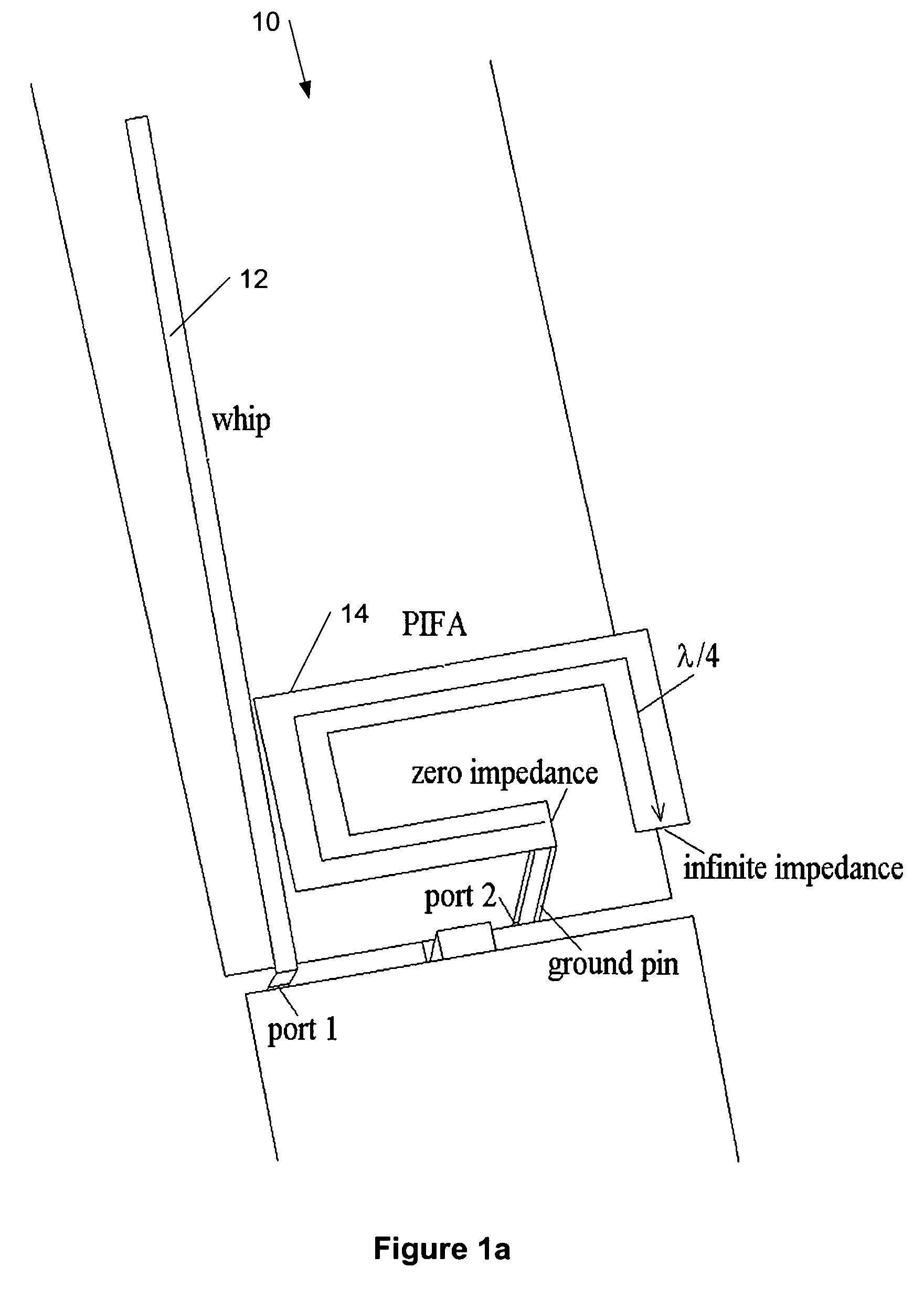Antenna isolation using grounded microwave elements
a microwave element and antenna isolation technology, applied in the field of antennas, can solve the problems of changing the radiation pattern and also the input impedance of the antenna, reducing the efficiencies of the antenna, and energy transfer between, so as to improve the antenna isolation
- Summary
- Abstract
- Description
- Claims
- Application Information
AI Technical Summary
Benefits of technology
Problems solved by technology
Method used
Image
Examples
Embodiment Construction
[0044]The present invention provides a new method for improving antenna isolation in an electronic communication device using grounded RF microwave elements and patterns (structures). According to embodiments of the present invention, the RF microwave element can be implemented as a short-circuited section of a quarter-wavelength long transmission line (such as a stripline), or the RF microwave element can contain a metallic coupler and two thin striplines with different lengths, or said the RF microwave element can be implemented using a balun concept. The electronic communication device can be a portable communication device, a mobile electronic device, a mobile phone, a terminal, a handset, etc.
[0045]According to an embodiment of the present invention, in a small terminal, it is possible to increase the isolation between two antennas significantly by suppressing the currents flowing along certain parts of the ground plane with a device that provides a high impedance (i.e., an imp...
PUM
 Login to View More
Login to View More Abstract
Description
Claims
Application Information
 Login to View More
Login to View More - R&D
- Intellectual Property
- Life Sciences
- Materials
- Tech Scout
- Unparalleled Data Quality
- Higher Quality Content
- 60% Fewer Hallucinations
Browse by: Latest US Patents, China's latest patents, Technical Efficacy Thesaurus, Application Domain, Technology Topic, Popular Technical Reports.
© 2025 PatSnap. All rights reserved.Legal|Privacy policy|Modern Slavery Act Transparency Statement|Sitemap|About US| Contact US: help@patsnap.com



